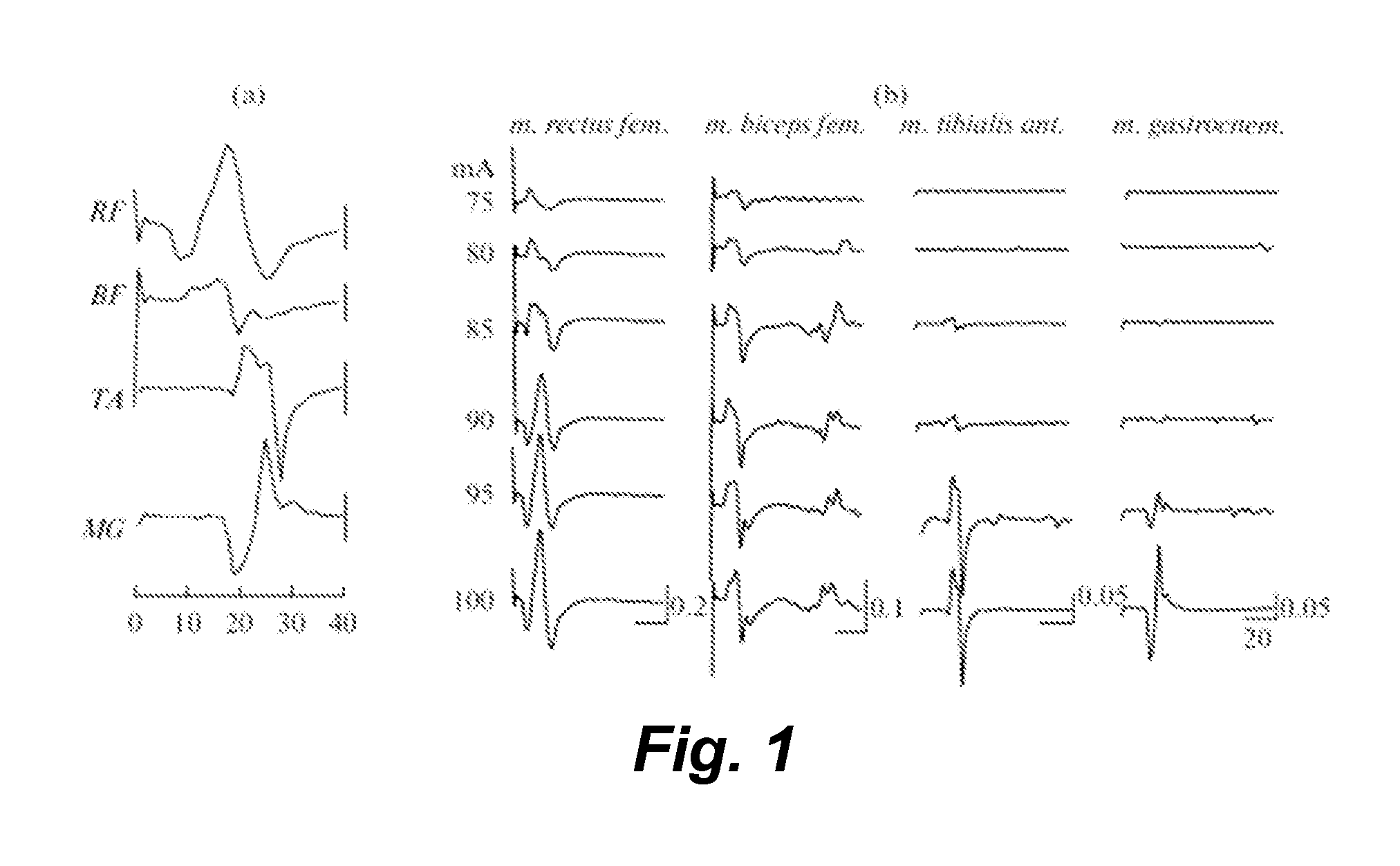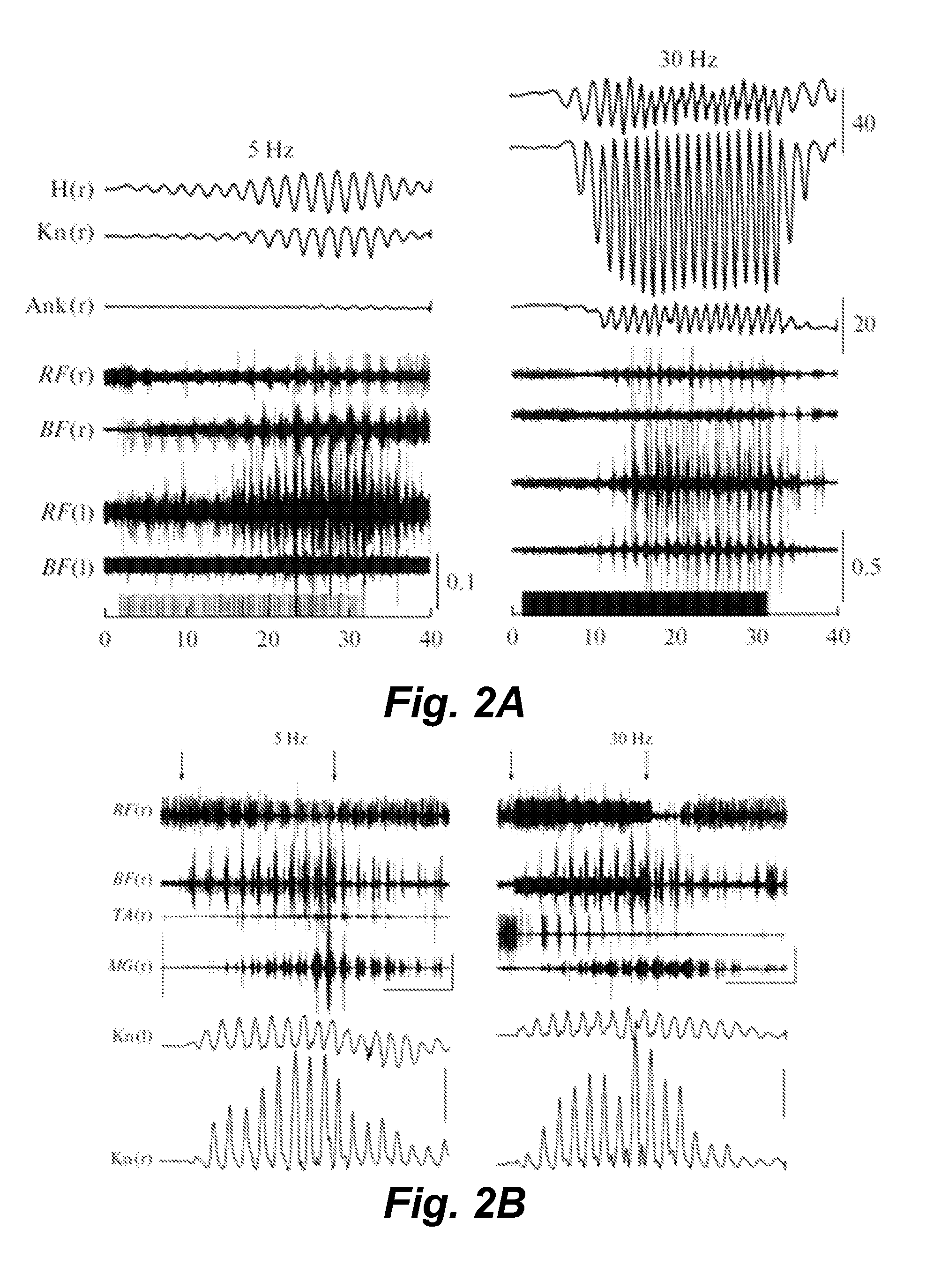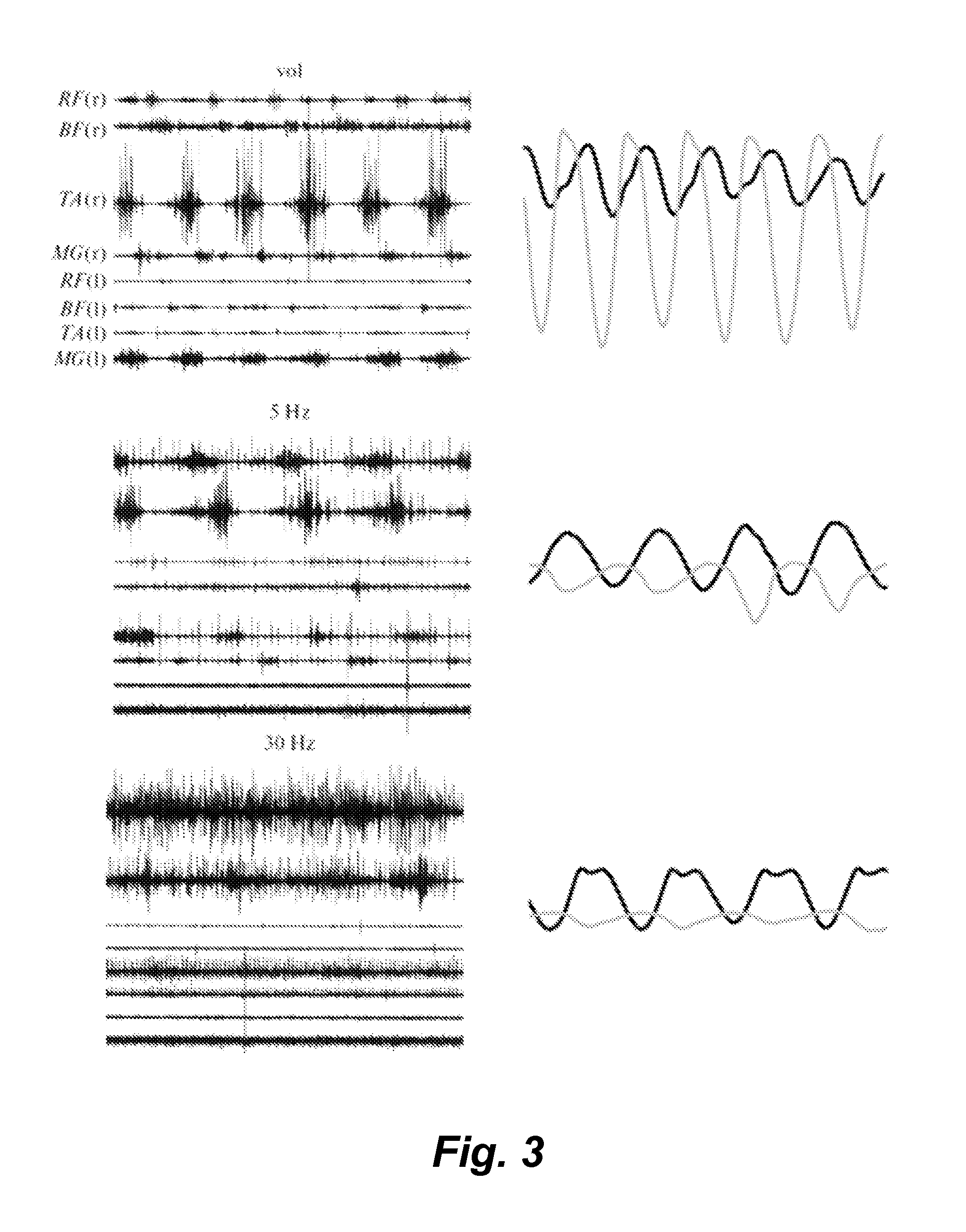Transcutaneous spinal cord stimulation: noninvasive tool for activation of locomotor circuitry
a locomotor circuit and transcutaneous technology, applied in the field of neurosurgical treatment and rehabilitation, can solve the problems of limited clinics for activating sns, spinal cord electromagnetic stimulation is limited by the technical capabilities of the stimulator, etc., to facilitate recovery, facilitate or enable recovery or improve the control of movement, and improve autonomic control
- Summary
- Abstract
- Description
- Claims
- Application Information
AI Technical Summary
Benefits of technology
Problems solved by technology
Method used
Image
Examples
example 1
Transcutaneous Electrical Stimulation of the Spinal Cord: A Noninvasive Tool for the Activation of Stepping Pattern Generators in Humans
[0055]A noninvasive method for activating the SN by means of transcutaneous electrical spinal cord stimulation (tESCS) is demonstrated in this Example. The method is based on our research that showed that a single dermal electric stimulus applied in the region of the T11-T12 vertebrae caused monosynaptic reflexes in the proximal and distal leg muscles in healthy subjects (see Courtine, G., Harkema S. J, Dy, C. J., Gerasimenko, Yu. P., and Dyhre-Poulsen, P., Modulation of Multisegmental Monosynaptic Responses in a Variety of Leg Muscles during Walking and Running in Humans, J Physiology, 2007, vol. 585, p. 1125) and in patients with clinically complete (ASIA A) spinal cord injury. See Dy, C. J., Gerasimenko, Y P., Edgerton, V R., DyhrePoulsen P., Courtine G., Harkema S., Phase-Dependent Modulation of Percutaneously Elicited Multisegmental Muscle Resp...
PUM
 Login to View More
Login to View More Abstract
Description
Claims
Application Information
 Login to View More
Login to View More - R&D
- Intellectual Property
- Life Sciences
- Materials
- Tech Scout
- Unparalleled Data Quality
- Higher Quality Content
- 60% Fewer Hallucinations
Browse by: Latest US Patents, China's latest patents, Technical Efficacy Thesaurus, Application Domain, Technology Topic, Popular Technical Reports.
© 2025 PatSnap. All rights reserved.Legal|Privacy policy|Modern Slavery Act Transparency Statement|Sitemap|About US| Contact US: help@patsnap.com



